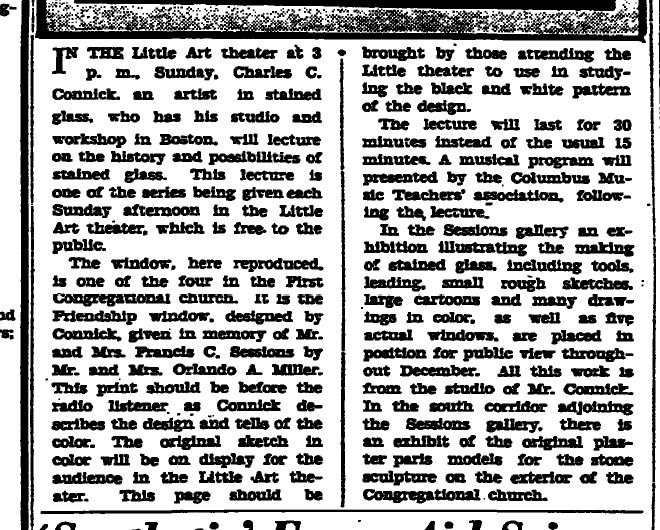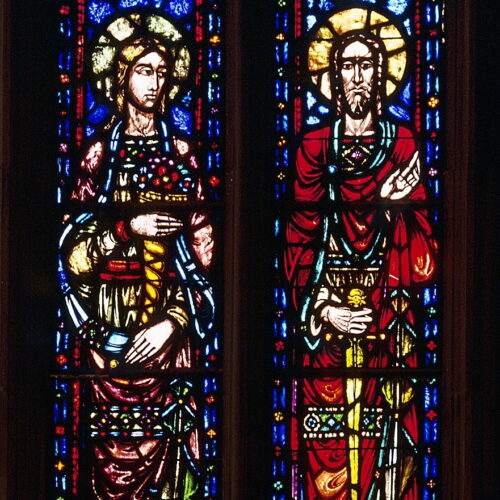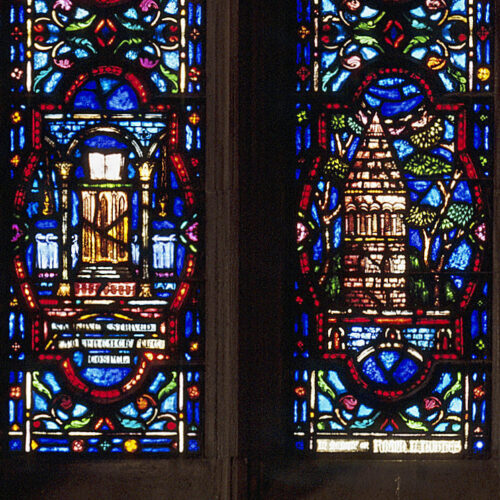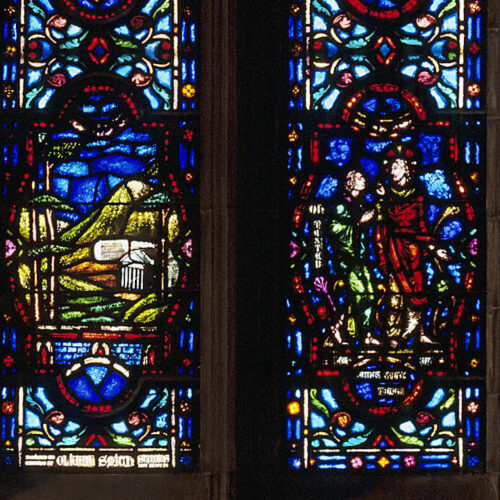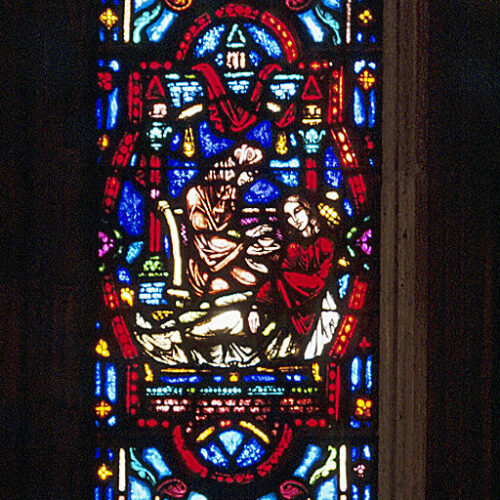Photo Credit above: Peter John Gates
Commemorating the 105th Anniversary of the death of Rev. Dr. Washington Gladden
| The Life Eternal By Melissa Blandi Kulwicki |

| “Gladden Is Dead” read the headline of the Columbus Citizen on July 2, 1918. The Columbus Evening Dispatch reported “Columbus’ First Citizen Summoned” accompanied by an illustration of the Rev. Washington Gladden in his study. Over the next several early July days of 1918, the death of Rev. Gladden was big news. One illustration pointed out that he had “The Love of our Entire Community”, “National Respect”, and “International Veneration.” This man, a pioneer of the social gospel movement, was deeply loved, incredibly admired, and widely celebrated. The message of Rev. Gladden and his contemporaries like Lyman Abbott, Charles Monroe Sheldon, and Walter Rausenbusch was a simple one: apply Christian ethics such as charity and justice to social problems, you know as Jesus did. They believed the problems of social justice such as economic inequality, poverty, crime, racial tension, women’s rights, child labor, inadequate education, and lack of housing, were better solved by shifting focus from individual sin to reforming the structures of society and institutions. They recognized that in order to “form a more perfect union” and provide “liberty and justice for all,” mercy and justice were both key elements. The influence the social gospel had on the evolution of America in the 20th and into the 21st century is obvious. In the 1930s during America’s darkest economic days, some of the seeds planted by the Social Gospel came to fruition. The rise of organized labor and Franklin D. Roosevelt’s New Deal had ideals that were rooted in religious social reform. In a letter dated July 18, 1952, to his then-future wife Coretta Scott, the self-described “advocator of the social gospel,” Dr. Martin Luther King Jr. wrote; “Let us continue to hope, work, and pray that in the future we will live to see a warless world, a better distribution of wealth, and a brotherhood that transcends race or color. This is the gospel that I will preach to the world.” |
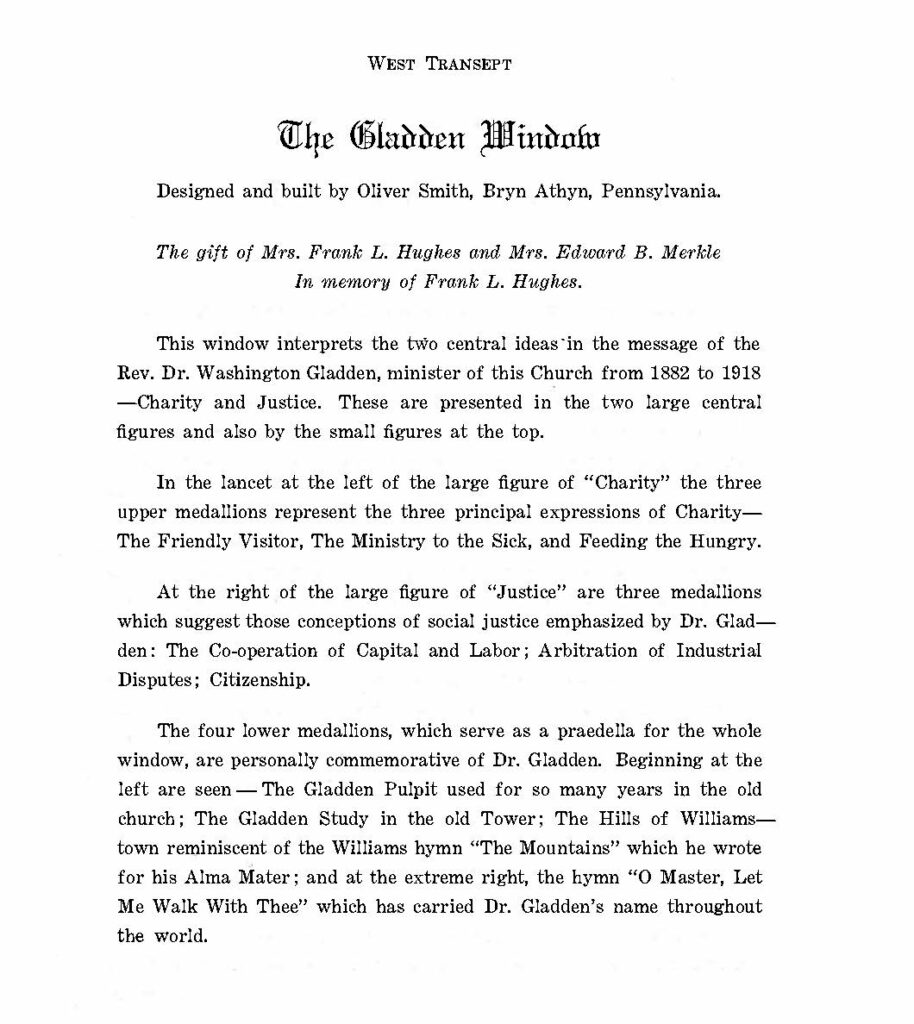
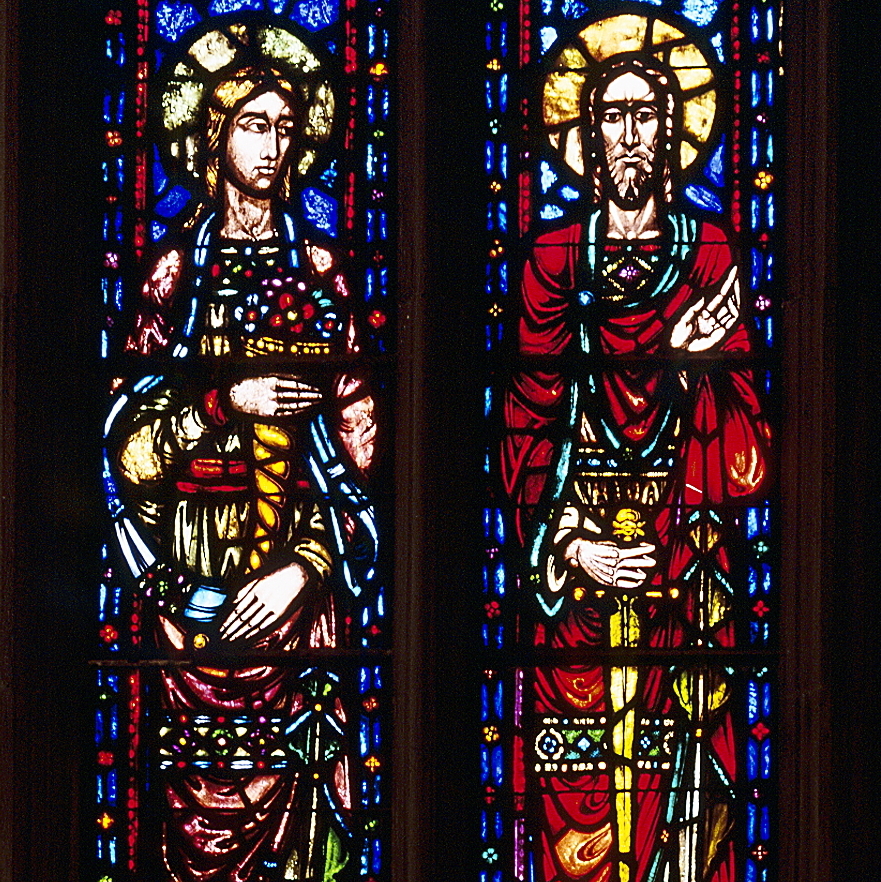
The above from a scan of the original 1931 Descriptive Guide
(from the collection of the Rev. Dr. Timothy Ahrens)
